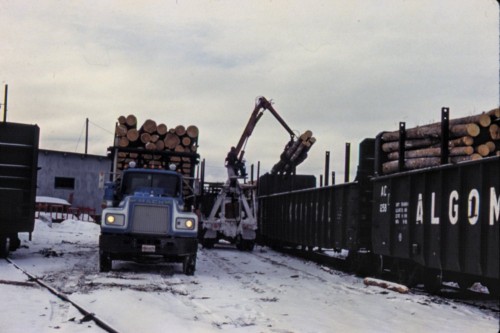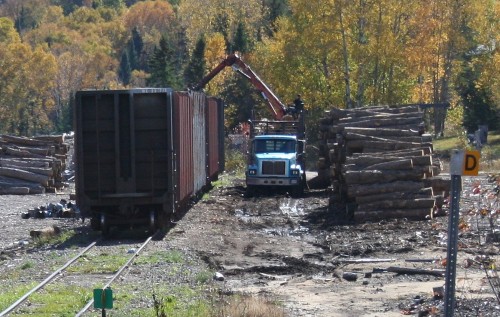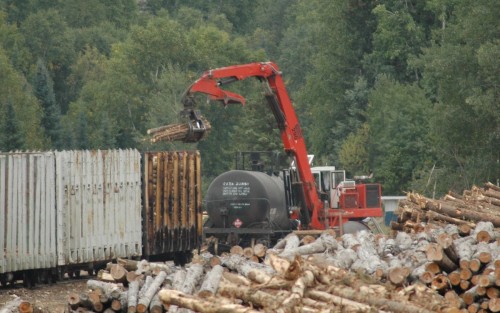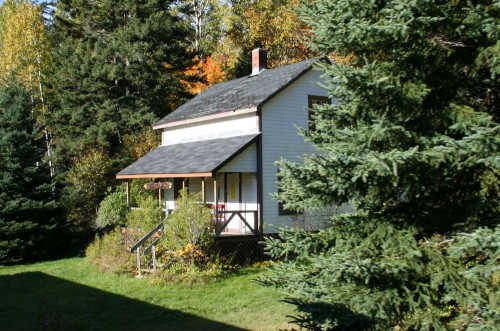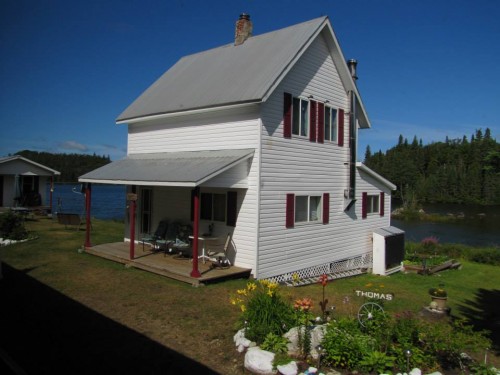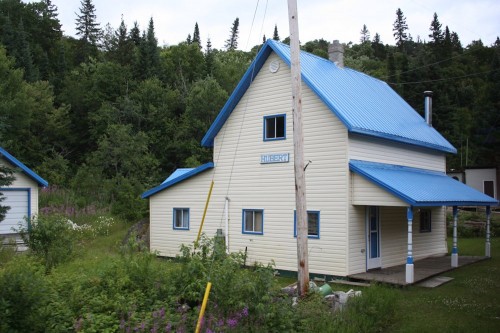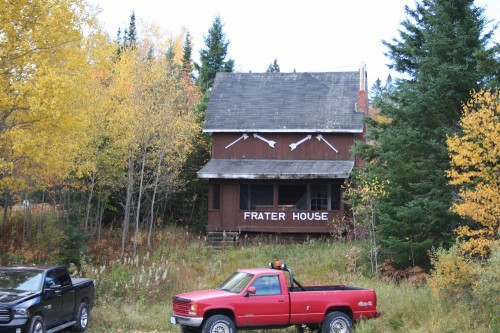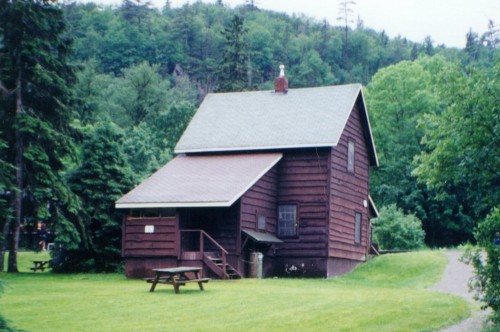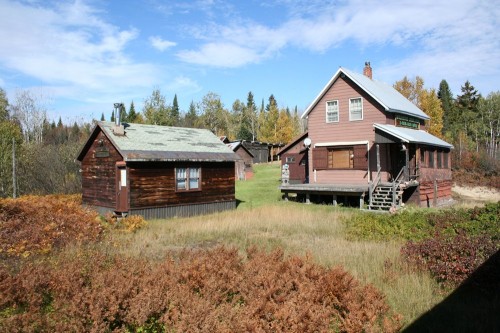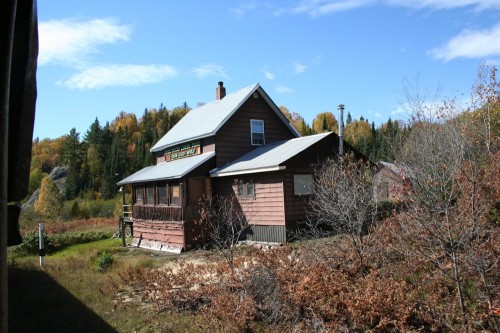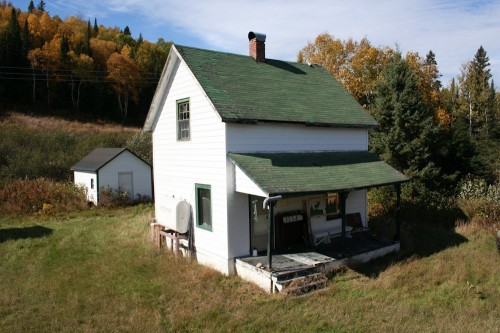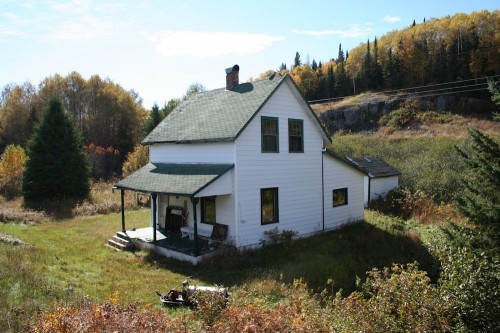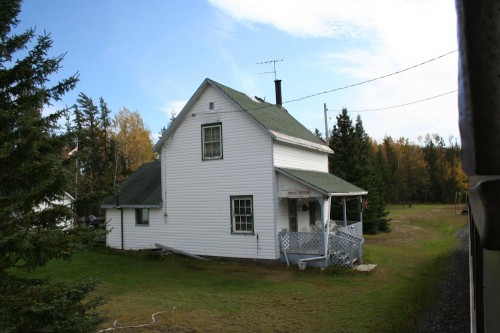Other than iron ore from Wawa, and finished products from Algoma Steel created from said iron ore, one of the primary cargoes carried on the Algoma Central Railway was pulpwood.
Over the years a number of private spurs operated by different logging and forestry companies are listed in employee timetables, as well as other major operations loading from a clearing alongside the railway’s house track at various sidings.
So, with pulpwood loading being such a significant source of traffic on the ACR (or in several locations on pretty much all other Northern Ontario and Quebec lines) anyone modeling the ACR or really any model railways loosely based on Northern Ontario will want to include some pulpwood traffic at least, and probably actually at least one loading spur somewhere to represent this.
So I thought I’d share a series of my photos of different pulpwood loading locations and take a look what such an operation looks like. We find that the common word here is “simplicity”. Loading pulpwood does not require large overhead cranes or loading equipment (although at some larger saw mills like the Tembec mill at Hearst massive cranes make short work of moving tree-length logs between railcars or trucks and a large storage pile and the mill), enclosed loading bays, conveyors, dump pits, etc. All that is needed in most cases is simply a flat cleared area next to the tracks where trucks can drive up and unload their logs either directly into waiting railcars or into a storage pile. There are no fixed structures required to model, but the log trucks and other self-propelled equipment are of definite interest.
This first photo is from my slide collection (photographer’s name unknown) and is taken at the Hawk Junction in early 1981 showing a pair of trucks loading gondola cars with logs on the team track behind the old railway freight shed (the grey building at background left).
Note that the truck in the middle (and likely the one at left as well) has its own hydraulic loading crane permanently mounted directly to the rear of the truck itself. Not all trucks will have this, but the self loader is a fairly common feature that allows the truck itself to also include the required loading equipment.
Unfortunately I haven’t taken the chance to actually personally photograph any individual trucks directly, but a google image search for “pulpwood truck” will turn up some good results.
This photo is from the Huron Central ex-CP yard in Sault Ste. Marie. These two south tracks of the yard are always jammed with pulpwood flatcars which are loaded here for shipment to the paper mill at Espanola, ON on the Huron Central between Sault Ste. Marie and Sudbury. The facility is no more involved than a wide driveway along the track running the length of the yard. For the detail-oriented, I noted in most of my closer shots of individual railcars on these tracks quite a bit of bark and other debris alongside the rails where trucks load the cars.
This photo was taken at Eton from my trip on the Tour of the Line in fall 2013. Here again we see another log truck equipped with a self loader on the rear loading logs into flatcars on the spur track. While this photo really only shows about a quarter to a third of the operation here (there is a second spur to the left and this shows only a portion of the cleared area) the unseen parts are simply more of the same and this shot really shows all that is required for a log loading operation.
This last photo was again taken at Eton, this time in 2005, and was sent to me by Steve Watson to illustrate the loading equipment. The machine this time is a SERCO Model 290 log loader; a larger specialized stand alone piece of equipment.
This photo also shows something else that is interesting. Notice the tank car (with diesel fuel placards) spotted at the very end of the spur track. While some pulpwood is delivered via the main highway system and loaded at spur tracks in or near town, some of these logging spurs can be pretty isolated from any regular road system (I was able to actually trace a logging road from Eton through Frater on satellite imagery, but it’s a pretty long and circuitous route over what’s likely some pretty poor excuses for roads, and even then you’re still 100 miles north of Sault Ste. Marie on Highway 17 by the time you get to the main road), making bringing in a tanker truck to refuel your logging trucks and other equipment a difficult proposition.
So an interesting idea to add to your operation, if the logging camp is particularly remote, is to occasionally spot a tank car of diesel fuel at the very end of a spur to refuel all your trucks. This sounds like something I can do at my pulpwood camp at Mosher which was also pretty isolated. I’ve heard this location also had portable unloading ramp on the north spur where trucks and other equipment could be brought in to the camp and older equipment was just sometimes abandoned there since there was little to no access to the outside road system from the logging road network around Mosher at the time.

